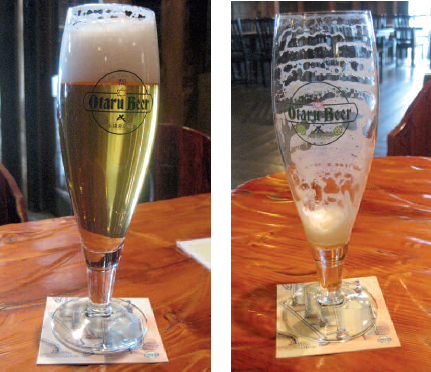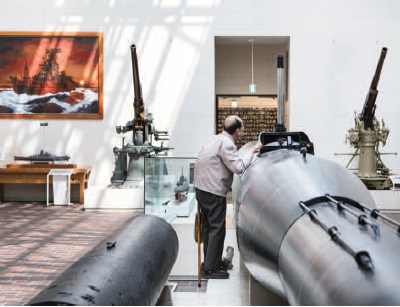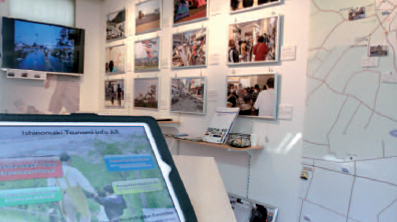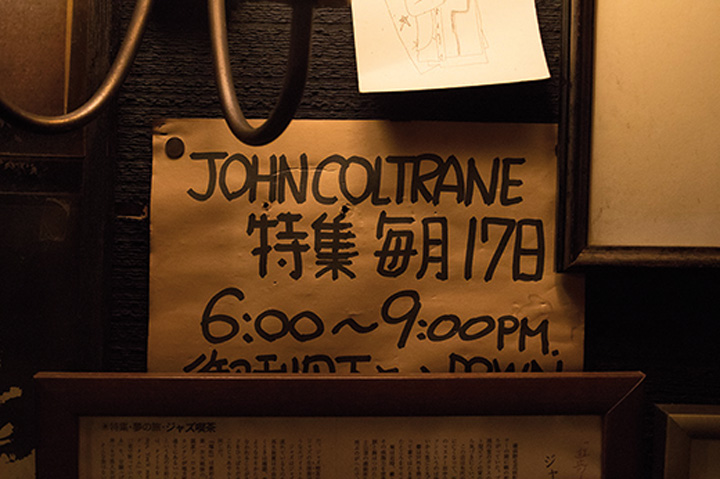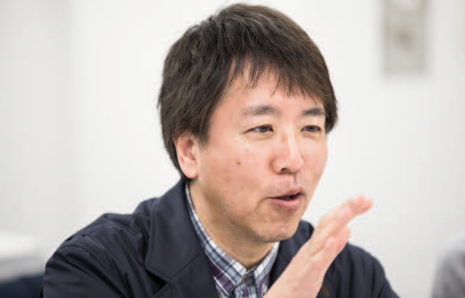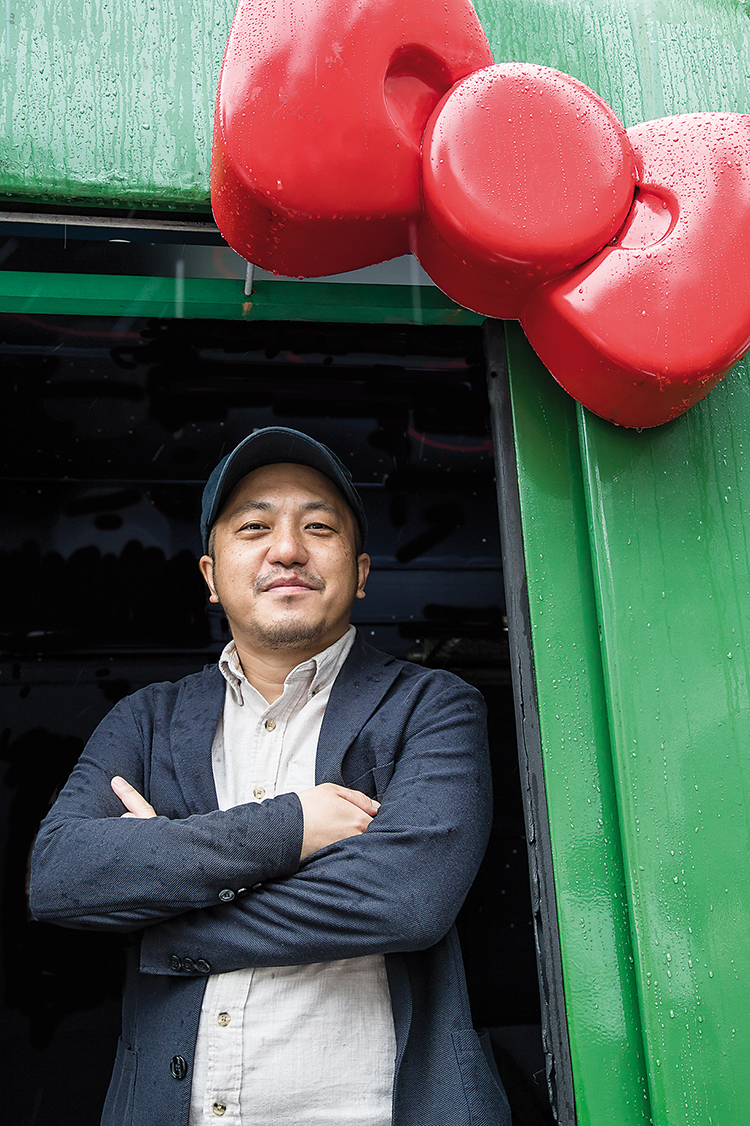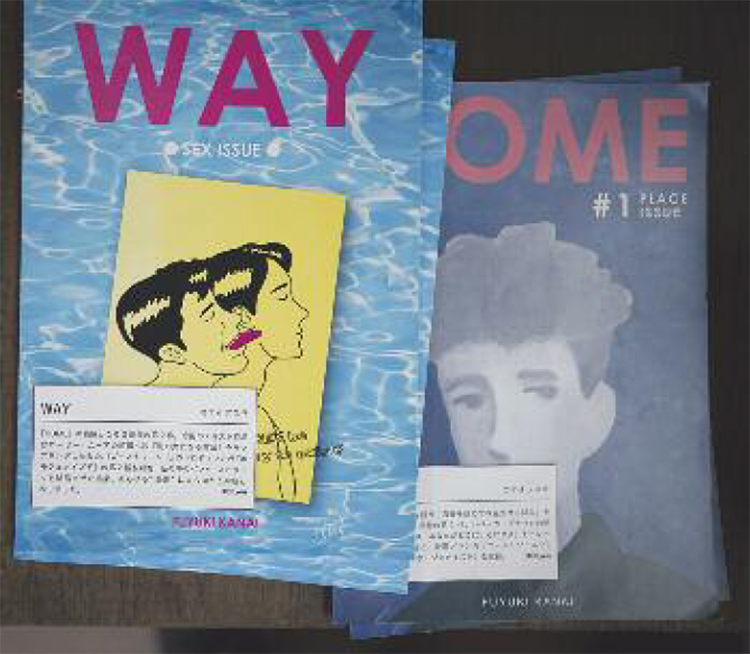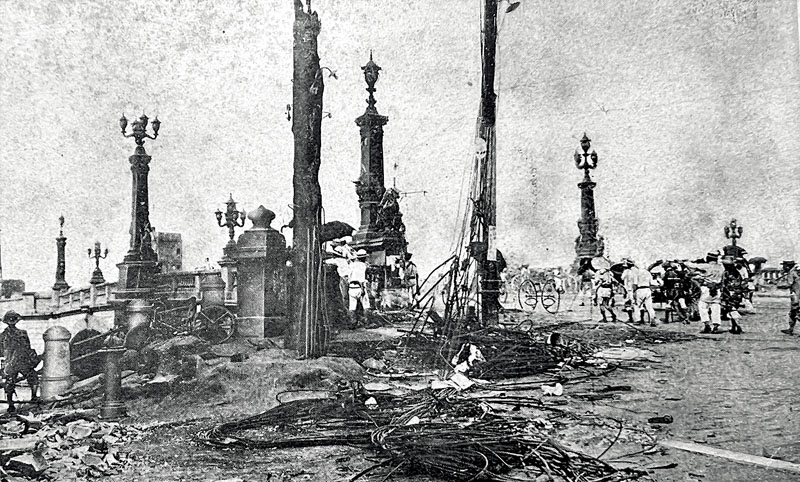
The Great Kanto Earthquake has generated a vast literature even in Western languages. One of the more interesting products of all the resulting research is Gennifer Weisenfeld’s Imaging Disaster: Tokyo and the Visual Culture of Japan’s Great Earthquake of 1923 (University of California Press, 2012), a book that looks at how different visual media produced diverse modes of seeing, understanding and remembering the earthquake. Imaging Disaster is a gorgeous looking book and it’s not only interesting in terms of the arguments presented by the author (a professor of art history and visual studies at Duke University in the U.S.) but it’s also an amazingly diverse visual archive in which the images are not mere illustrations but central parts of the historical narrative.
It’s not the first time that Weisenfeld has explored Japan’s visual culture, and this book was actually born from the work she had previously done for her first book. “Mavo: Japanese Artists and the Avant-Garde, 1905-1931 was about the Japanese avant-garde of the 1920s,” Weisenfeld says. “Mavo was an avant-garde group whose work spans the Great Kanto Earthquake and was deeply inflected and influenced by that event. In fact, the earthquake experience radicalized their politics and their aesthetics. What I realized in the course of doing that book was that the story of the earthquake was so much bigger than modernism and the avant-garde. The responses were so vast and diverse that I really wanted to show this story in a broader context.”
One of Imaging Disaster’s main themes is that the earthquake gave rise to several conflicting reactions, and the visual media (photography, films, prints, etc.) played a big part in forming those interpretations. “Disasters provide opportunities for individuals, societies and nations to articulate their diverse agendas for urban, social, political or moral reform,” Weisenfeld says. “In this respect, mass media and new scientific technologies globalized Japan’s tragedy, inviting empathy from the world. Artists, on the other hand, resoundingly asserted the subjective, personal and emotional nature of the disaster experience (the sense of loss, suffering and grief) as well as its aesthetic resonances.”
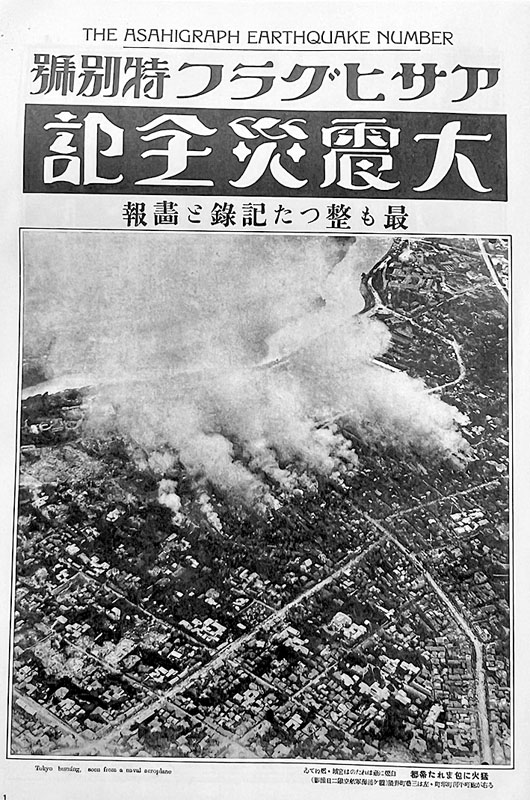
Photography was emerging at the time as a major visual medium, which, because of its directness and seemingly objective gaze, had the power to influence people, creating at the same time a visual lexicon of disaster, which since then has been extensively used by different actors (the media, the authorities, political and economic lobbies) to forward their interests. “There’s no doubt that photography was thought to communicate ‘visible evidence’,” Weisenfeld says. “You could say that the photographic eye legitimated its own visual authority. For example, optical technology could serve as a weapon of control, whether through the commanding strategic vision of aerial photography used in disaster management or the dominating gaze of the camera that imposed order in the face of violent chaos.”
In examining the thousands of images that have survived to this day, Weisenfeld points out how in photographs, the subtle differences in perspective among elevated and panoramic scenes of the devastated cityscape give hints to the scope of the disaster. “The photographic eye directly affected perception,” she says. “Aerial photographs of the damaged areas dwarfed the people on the ground, emphasizing the expanse of devastation. Such images inherently express scale and magnitude and speak more of civilizational and urbanistic destruction than of individual lives lost.
“It is easy to see how those images played a central role in shaping people’s opinions, for example by constructing the earthquake as a national event, rather than simply a local tragedy, that demanded solidarity from all Japanese people. Based on photography’s purported truth-telling powers, images of disaster erected a framework of visual authority that legitimated the state’s responses to this national catastrophe. Moreover, these visions communicated the immense and historic scale of the catastrophe that accorded Japan the dubious distinction of premier status in the global theatre of earthquake nations.”
Mapping was another medium that came handy in both showing the magnitude of the damage and reshaping the old city into a new administrative entity, consolidating, as Weisenfeld says, “distinct townships and prefectures into the amalgamated Kanto region, a major geographic area whose national importance implicitly exceeded that of any one municipality. This was a strategic move that historian Narita Ryuichi has also identified in the renaming of the quake as the Great Kanto Earthquake.”
To many Westerners, ukiyo-e are among the most familiar forms of Japanese art. While woodblock prints were Japan’s primary news medium until the late 19th century, by the end of the Taisho Period (1912-1926) they had lost much of their relevance, having been overtaken by more technology-driven media. Yet, they still played a part in the visual tale of the disaster – arguably the last time they managed to grab the public’s attention so powerfully. “Modern prints of the earthquake structured the spectacular destruction and ruins of the 1923 quake within the popular conventional taxonomy of picturesque famous sites,” Weisenfeld says. “In this sense, Japan’s premodern imaging of disaster continued to exert a strong influence well into the modern period, underscoring the moral connections between the natural, the human and the divine; finding humorous and playful ways to meld horror and parody in visual satire; and capitalizing on the spectacular entertainment value of the macabre. Monthly subscriptions to woodblock print services, for example, expanded their viewership at a time when the woodblock medium was already on a decline in terms of popular viewership.”
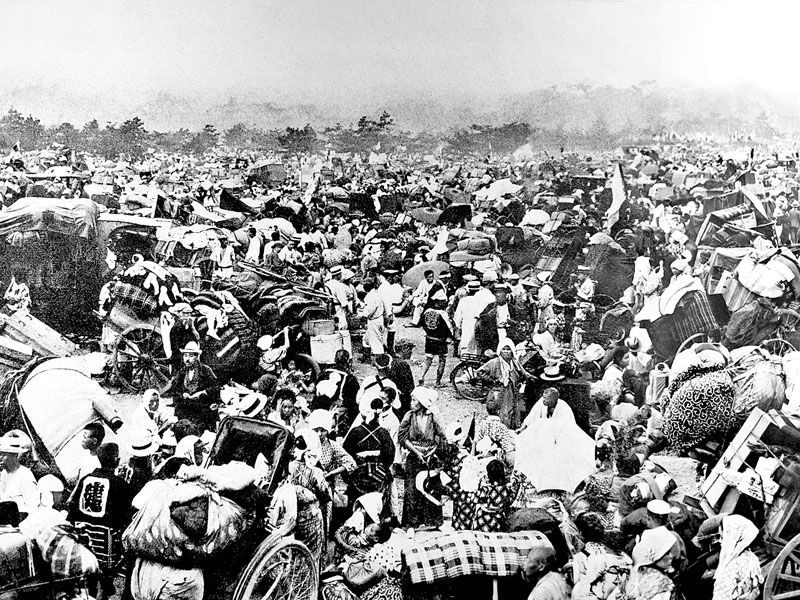
Speaking of the “spectacular entertainment value of the macabre”, the disaster generated a lucrative side-business: visual souvenirs in the form of postcards of burnt and dead bodies, or bodies in rivers and waterways. Those postcards, of course, were not the first case of commercial exploitation of death. People, after all, have always had a morbid fascination with violent death (see, for instance, American lynching postcards), and Japan is no exception. “There was a longstanding merging of the moral and the macabre in Japanese visual culture,” Weisenfeld notes. “Despite the immense discomfort the viewer experiences looking at these kinds of graphic images, disaster imagery could not be separated from visual entertainment, even when it conveyed strong moralistic messages. Disaster images are discomfiting because they implicate the viewer – then and now – as a voyeur. The exploitative objectification of the dead is underscored when the pictorial compositions show survivors gazing intently upon the exposed bodies. In such cases, looking is a form of ocular aggression as well as historical witnessing.
“In my research, I was struck by two things: first of all, the sheer abundance of images of dead bodies at that time. Nowadays you wouldn’t see that because the mass media sanitize what they show much more than they ever did before. The second thing is that rather than just focusing in on the magnitude of death, certain places were particularly associated with particular bodies. For instance, there was the repeated use of the Yoshiwara red-light district in relation to showing dead bodies of women. Yoshiwara was obviously famous because it was at the centre of the local economy of sex workers. So the fact that those postcards focused on that subject show me an interesting overlay.”
Another element that, at first glance, seems out of place after a disaster is humour. Yet, Weisenfeld points out that humour has long been an important element in the way the Japanese have reacted to catastrophe. “Visual satire actively shaped popular perceptions of the quake,” she says, “by giving voice to the central debates about the connection between disaster and modernity. For example, manga artists and caricaturists working for the popular press played an important role in highlighting the many ironies of the post-quake moment and the slippery politics of reconstruction, specifically the conflicted perceptions of its main architect, Home Minister Goto Shinpei. You could see satire as the way in which people tried to speak back to the exploitative circumstances after the quake through humorous jabs that exposed the cramped and unsanitary barracks and the rampant profiteering in the reconstruction effort.”
Though history is presented as a factual record of an event, we know that what we consider a historical record is actually a mix of fact and fiction, documentary and melodrama. Also, according to Weisenfeld, for everything that is made visible in the imaging of catastrophic events, many things are made invisible. “The response to the earthquake,” she says, “was both history in the making and the silencing of that history through active suppression of ethnicity (e.g. Korean colonial subjects who were xenophobically targeted as subversive and dangerous), politics (e.g. leftist political figures who were also targeted as subversive and dangerous) and visible social fractures along the fault lines of class (e.g. people living in the low city areas, which were disproportionately affected).
“You only have to look at disasters around the world to see that the disenfranchised, the poor, regional areas, just suffer more. There is this idea that disaster treats everyone equally. Particularly governments will say that everyone is equal in the face of disaster because nature knows no class restrictions and hits everyone. That’s not really true, and 1923 was a typical case in which working-class people suffered the most.”
Perceived as a potentially transformative moment in Japan’s modern history, the period immediately after the disaster echoed with the popular phrase “kono sai [da kara]!” (under these circumstances!), which served as the preface to a wide array of reform proposals. Among the main actors in 1923 who used the earthquake to advocate for their own visions for the future and articulate their diametrically opposed agendas were the imperial government and the leftist avant-garde. “If, on one side, the authorities presented heroic images that were part of the state’s narrative of resilience,” Weisenfeld says, “and its aim of galvanizing the nation for the task of reconstruction, they did not go unchallenged, but were countered by a range of social critiques, both subtle and explicit, some in the form of general moral pronouncements about the earthquake as divine punishment, and others levelling more pointed criticisms of public and private conduct, economic inequities, or the official mishandling of the reconstruction process. There was a sort of emancipatory euphoria among left-leaning intellectuals who felt oppressed by the Japanese political and cultural establishment.
“This period even saw a new generation of artists inspired by global movements in modernism take to the streets of the ruined cityscape to facilitate social change. As visible representatives of modernity’s radical cultural upheaval, these artists were alternately commended and vilified for their new social visions. While horrified by the extent of earthquake fatalities and the brutal murder of leftist colleagues, members of the above-mentioned Mavo radical art movement of the 1920s, for example, responded to the destruction of Tokyo and part of its institutional infrastructure with creative fervour, mounting travelling street exhibitions of members’ artwork and designing architectural signboards and temporary barracks across the city. Like their colleagues in the Barrack Decoration Company, the group’s members revelled in the provisional, impermanent, and seemingly liberatory nature of the barracks.
“The Tokyo Metropolitan Government, on the other hand, sponsored major exhibitions and eventually a permanent memorial hall and museum, to narrate the story of disaster and reconstruction. The images displayed in these spaces created a strong visual and emotional connection between the venerable debris of the quake and the visual rhetoric of progressive urban planning, thereby enfolding mourning and memory into reconstruction and modernization.”
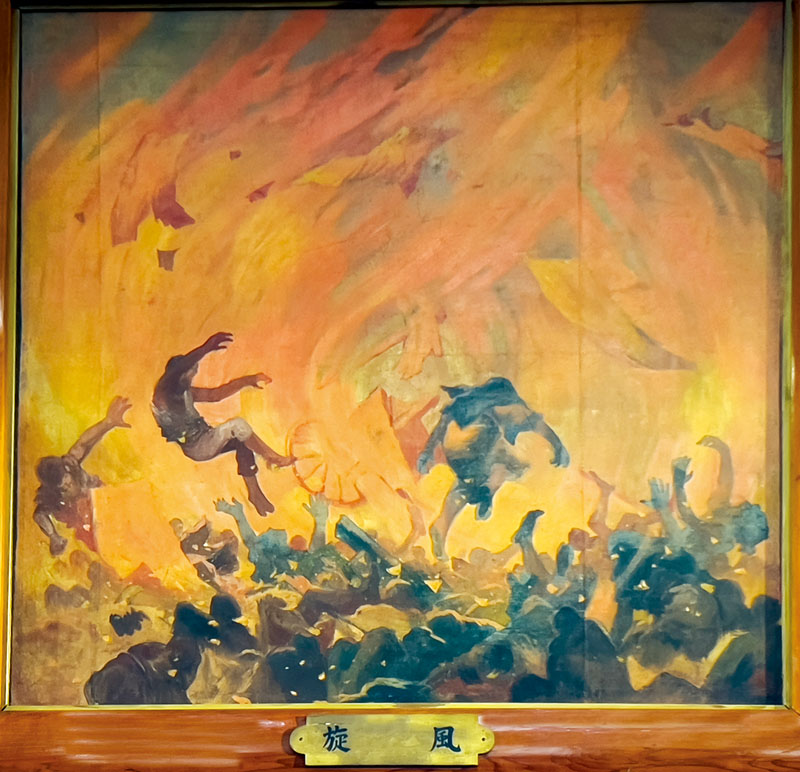
As with all disasters, the Great Kanto Earthquake awakened a deep-seated fear about the possible breakdown of social order into chaos, thus generating powerful visual assertions of authority. “The two types of imperial earthquake imagery that bolstered the nation’s authority were benevolence and steadfast leadership,” Weisenfeld says. “Their ultimate goal was to facilitate state interventions into the social life of the city during reconstruction to make it a more productive, hygienic and, ostensibly, safer metropolis on a par with other capitals around the world.”
In the end, both the cabinet and metropolitan government managed to ensure their interpretation of the events and their vision of a new, modern Japan prevailed. “The dominant 1923 narrative of the disaster argued for the unique resilience of the Japanese people and the superlative leadership of their government,” Weisenfeld concludes. “The fundamental power of the Japanese nation-state defined that tragic experience as a national triumph against adversity that produced the gleaming new Tokyo metropolis.
“Nations have an investment in expressing the collective nature of trauma to mobilize social action and to downplay dissension. In the end, however, the disaster became a popular metaphor for the relentless destruction of tradition by modernity.
In the preface to her book, Weisenfeld quotes journalist and photographer Iwabu Takaaki who visited Japan after 3.11. His first impression was that “… a natural disaster exposes the weakness of the society it strikes”. According to Weisenfeld, the 1923 disaster exposed, among other problems, social inequities and fractiousness, the racist and xenophobic nature of Japanese imperialism and colonialism, as well as a deep misogyny and fear of the modern, liberated woman.
“Representations of heroic survivors, loyal imperial subjects, compassionate family members, magnanimous humanitarians, sympathetic artists, advocates of social unity and champions of the working class offered myriad positive images of an altruistic Japan,” she explains. “At the same time, lawless vigilantes, bigoted colonialists, misogynists, corrupt profiteers, political hacks, and menacing modernists revealed the deeply corrosive nature of the community. Interpretations differed widely according to a person’s politics, class, gender and ethnicity. These differences gradually became more muted, however, as the discourse of reconstruction ultimately yielded a retrospective official master narrative of the quake that then passed into collective memory.”
Gianni Simone
To learn more on the subject, check out our other articles :
No. 133 [FOCUS] Great Kanto Earthquake
No.133 [TRAVEL] Waiting for the Big One
No.133 [HISTORY] The dark side of the earthquake
Follow us !

